
Bishop O’Dowd High School
After going on a trip to Ocean Beach in San Francisco and gathering data about the local sand crabs, we wondered how many of them were “recruits,” little crabs which are new to life on the beach. How does this number change over time? Once a recruit settles on a beach, it will spend the rest of its life there. So, a healthy recruit population means that there will be a healthy adult population in the future (unless there is an environmental hazard). As long as there are no environmental hazards or strange weather conditions, the portion of recruits can be used to predict future sand crab growth and decline.
We, along with hundreds of other LiMPETS students over the past 10 years, collected sand crabs over a fifty-meter beach section in ten-meter increments. Flags were planted at the waterline and ten meters beyond into the ocean; in one-meter increments. A PVC tube collected standardized “core” samples of sand at each flag. Placing the core in a container, sand was filtered, leaving only the sand crabs in the container. We measured each crab shell length. Crabs shorter than ten millimeters were considered recruits.
Using the LiMPETS Sandy Beach Monitoring database, we pulled data for 2003-2014 on Ocean Beach and calculated the percent of recruits in each core 4for those years. After creating a bar graph from the data, we noticed a large spike in the percent of recruits in 2005. Contrary, 2013 had the record low percentage of recruits.
Before a recruit settles on a beach, it lives in the ocean as larvae and at the whim of the ocean currents. We researched what happens to sand crabs during the larval stage and found most larvae (92%) are not affected by upwelling of the coast of beaches. In fact they maintained high densities and stayed within 6km of their home beach. Crabs in post larval stage migrated back to their main beach a vast majority of the time. This suggests that wind and ocean upwelling play a small role in larval distribution, and that beaches with high offshore larval population will be less likely to collapse as a population. (Morgan et al., 2009)
Sand crab populations north of the California/Oregon border are few and far between, maintained by random larval migration from California populations. These migrations are caused during the El Niño years when strong currents sweep them northwards up the coast. This research is relevant because these migrations can be used as a metric of how strong the El Niño currents are in any given El Niño year.
Upwelling doesn’t always force larvae to relocate. El Niño events can cause strong currents which carry the larvae north. During El Niño, more larvae appear in the northern areas of the west coast, including northern California and Oregon. This is likely because the Davidson Current washes them out and pushes them north. In 1997, there was an abnormal warm spawning season, which led to its increase in length as adults spawned and created many more recruits.
The occurrence of El Niño decreases recruitment at Ocean Beach, as recruits are carried to northernmost shores. Recruit populations were low in 2004 and 2011 following a moderate El Niño season. Sorte suggests larvae are driven further north by strong currents. Studying Oregon beaches might show that populations increased during these years. Without other context, our data shows little about the survival of sand crabs at large. The current’s path changes recruitment, and our data speaks of each year’s current health. However, there is still a loose correlation between recruit percentage and total population 2-3 years later at Ocean Beach. This loose correlation is likely due to the multitude of other variables that affect Sand Crab populations that we couldn’t take into account in our analysis. We can see that even if the peaks in recruit percentage don’t have a corresponding population peak there is still an overall increase in population 2-3 years after a recruit spike. Seen in the years 2004-05, and 2010-12 in the population chart below.
These data shows that there is a loose correlation between recruit percentage and the sand crab population at a beach in 2 to 3 years.




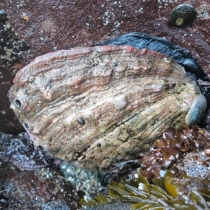


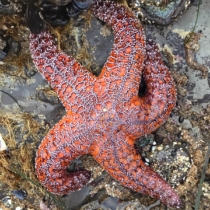





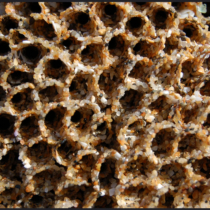









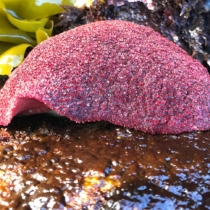










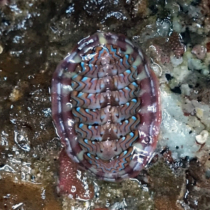


I really like this blog. I think it is very well formatted, and I also like how you guys tie in the aspect of upwelling which is a very topical occurrence as we have just recently learned about this in class. I find it interesting that sand crabs in the larval stage are unaffected by upwelling. I also think it’s very interesting that the sand crab population in other locations such as Oregon can show the intensity of an El Nino year. This fact shows the importance of sand crabs as an indicator species; by studying sand crabs, scientists can discover a multitude of new information such as impending extinction, fluidity of the food chain, predator-prey relationships, and El Nino status. Overall, I think this blog is very well organized and extremely informative.
Hello,
I think you put together a very engaging, and well thought out blog. I loved reading every part of it and the images that went along with the text helped for me to visualize what I was reading. I think the topic that you chose is incredibly important, due to the fact that the children (or the recruits) are the start and continuation of this species. Without the babies, the species would become extinct. Something that I found interesting was how the population or number of sand crabs can show the “intensity” of an El Nino year. This is important because it shows how the sand crabs can help by not only providing a home for parasites, or being the prey for birds, but they also help us in letting us know important information such as the intensity of an El Nino year.